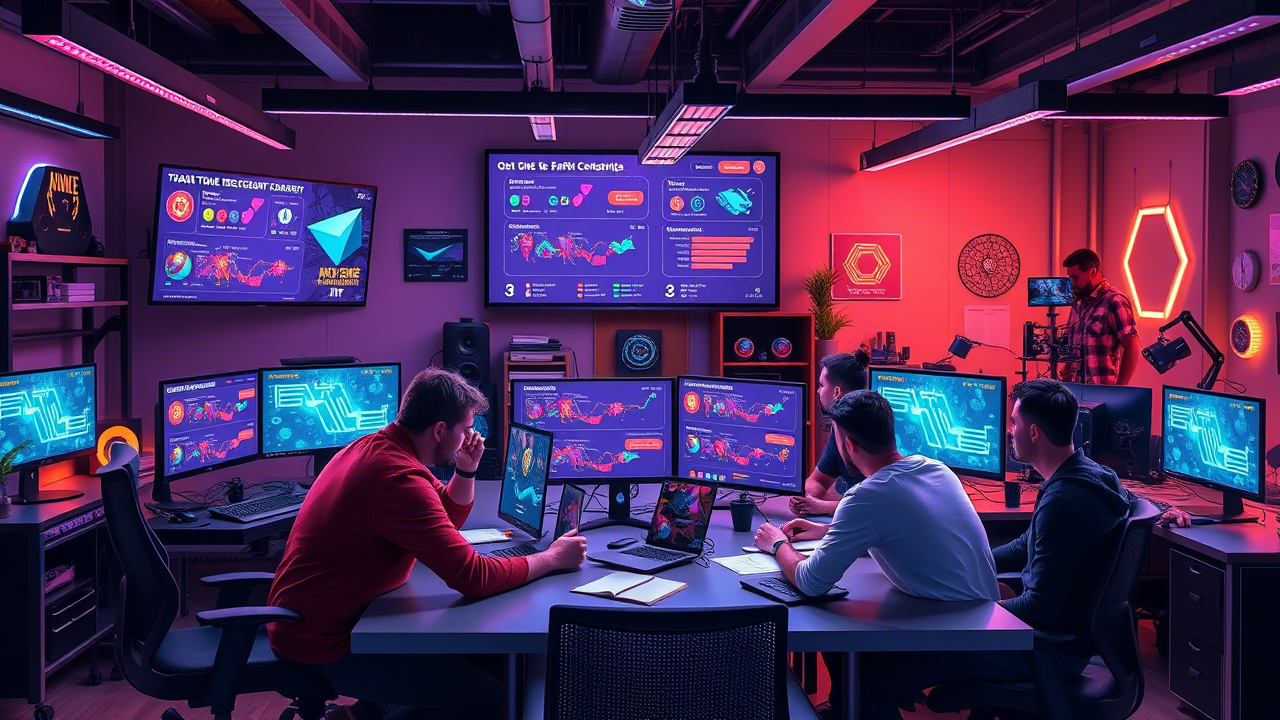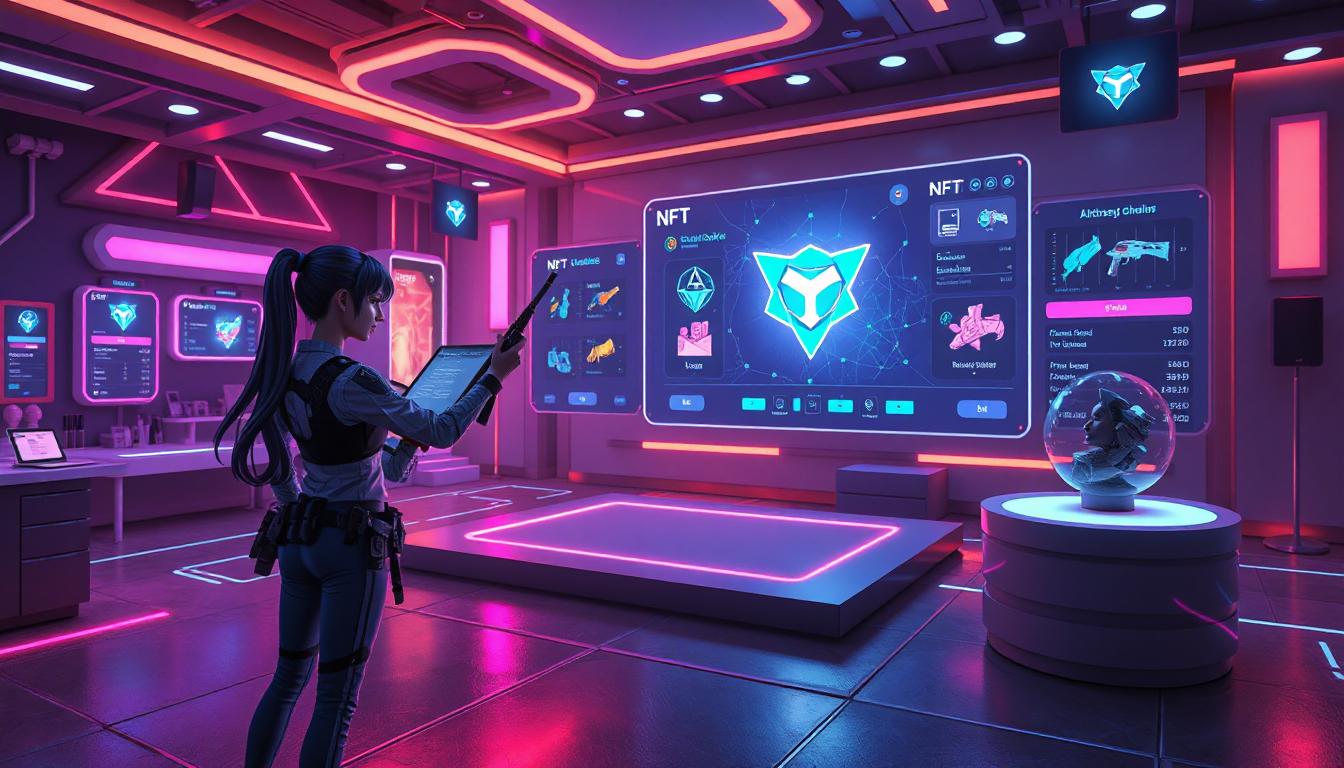Cloud Gaming: Walking Through the Fog?
Cloud gaming, publically known as game streaming, has entered the industry about over a decade ago. By allowing players to enjoy high-quality video games without having to spend lots of money on expensive gaming hardware, it has what it takes to democratize people’s access to games from all around the world. However, as every rose has its thorn, cloud gaming is not without its flaws. This article dives deep into the details of cloud gaming, highlighting its advantages and disadvantages, and exploring its future. Let’s first see what cloud gaming is.
What is Cloud Gaming?
Cloud gaming enables you to play video games from remote servers rather than downloading or installing them on your local devices. This way, the heavy computational tasks of rendering graphics and managing game physics will be handled by powerful data centers. The results are then streamed to the player’s device in real-time, similar to how services like Netflix stream movies.
This innovation has been extensively studied by institutions like MIT. MIT and Microsoft researchers collaborated on a project called “Ekho,” focusing on improving synchronization and reducing latency in media streams for cloud gaming. You can read about this project in more detail here: https://news.mit.edu/2023/system-ekho-cloud-gaming-sync-0831.
Benefits of Cloud Gaming
Cloud gaming offers several advantages that make it an interesting choice for both casual and serious game players:
1. Accessibility for All
One of the most significant advantages of cloud gaming is its accessibility. Game players no longer need to spend their money on high-end gaming PCs or consoles. Instead, they can access their favorite games on smartphones, tablets, or even older laptops.
According to a report from Harvard University, cloud computing technologies, like cloud gaming, are a big player in breaking down barriers to technology adoption worldwide (Harvard Gazette). By using these technologies, gamers in developing regions of the globe can experience top-tier gaming for the first time.
2. Device Independence
Cloud gaming services are device-agnostic, allowing game players to switch between devices seamlessly. A gamer could start playing on their smart TV at home and continue on their smartphone while traveling on a plane.
3. Cost-Effectiveness
For many gamers, cloud gaming is a cost-effective replacement to traditional gaming setups. As subscriptions to game streaming apps are often cheaper than buying high-end hardware, making gaming more accessible to budget-conscious players.
4. Elimination of Downloads and Updates
Cloud gaming services removes the need for large downloads, installations, or annoying constant updates. Players can hop on their games instantly, saving time on their life and storage space on their devices.
Challenges in Cloud Gaming
Despite its benefits, cloud gaming faces several challenges:
1. High Internet Requirements
To run effectively, game streaming sites require a stable and fast internet connection. Bandwidth limitations and poor internet infrastructure in many developing regions are the main barriers to universal adoption.
Stanford University has been exploring the challenges of internet-dependent technologies, noting that while 5G and fiber optics are expanding, accessibility remains uneven (Stanford Research). This Research highlights the challenges of reliance on stable and fast internet connectivity, emphasizing key issues like connectivity limitations, particularly in rural and underserved areas, and infrastructure gaps, such as insufficient broadband networks and inconsistent 5G coverage. These limitations affect the performance and accessibility of technologies like cloud gaming, telemedicine, and IoT devices. The research promotes greater investment in internet infrastructure and policies aimed at reducing the digital divide to ensure equitable access to emerging internet-reliant innovations.
2. Latency and Input Lag
The delay between the player’s input and the game’s response is called latency, which can severely impact gameplay. Competitive gaming, especially, demands near-instant responsiveness, which can be difficult to achieve in a cloud-based environment.
The “Ekho” project at MIT, which was mentioned before, offers hope for reducing latency issues, potentially bringing cloud gaming closer to matching traditional gaming setups (MIT News).
3. Data Costs
Streaming high-resolution games consumes significant amounts of data. For example, a single hour of 4K gameplay can use up to 20 GB of data, making it expensive for users in regions with data caps or high mobile data costs.
4. Environmental Concerns
The reliance on large data centers raises concerns about energy consumption. As data centers consume vast amounts of power, they contribute to carbon emissions. The University of Cambridge has emphasized the importance of sustainable practices in technology, urging the gaming industry to consider greener solutions. They have explored the environmental effect of cloud computing, including its energy-intensive data centers and growing carbon footprint. The study emphasizes the need for sustainable practices in the tech industry, such as adopting renewable energy sources for powering data centers and optimizing energy efficiency. It calls for increased awareness and proactive measures to mitigate the ecological consequences of the rapid expansion of cloud-based technologies, including cloud gaming. This research highlights the importance of balancing technological advancement with environmental stewardship. (Cambridge Sustainability).
Leading Cloud Gaming Services
The rise of cloud gaming has led to the development of several cloud gaming services. Each offers unique features tailored to different types of gamers. Here are some of the top players in the market:
-
NVIDIA GeForce NOW
GeForce NOW offers users the ability to stream games they already own from platforms like Steam and Epic Games. It boasts wide compatibility across devices, from PCs and Macs to smartphones.
-
Xbox Cloud Gaming (xCloud)
Part of Microsoft’s Xbox Game Pass Ultimate, this service offers access to a rich library of games, available across multiple devices. Its integration with the Xbox ecosystem makes it an excellent choice for Xbox enthusiasts.
-
PlayStation Plus Premium
Sony’s cloud gaming offering includes a mix of new and classic titles, catering to long-time PlayStation fans. The service also supports both streaming and downloading for select games.
-
Google Stadia
Despite initial challenges, Stadia remains an important player in the industry, offering unique features like direct game streaming from YouTube videos.
-
Amazon Luna
Amazon’s game streaming service features a channel-based subscription model, allowing users to select packages like Ubisoft+ for curated libraries.
The Future of Cloud Gaming
As technologies evolve, so too will cloud gaming. Several trends suggest how this space might develop in the coming years:
-
Integration with 5G
5G networks promise reduced latency and increased bandwidth, potentially resolving many current limitations of game streaming apps. According to a report from Carnegie Mellon University, 5G could revolutionize mobile cloud gaming by enabling real-time responsiveness (CMU Engineering). The University of Cambridge’s Department of Sociology intuitive article titled “The Environmental Impact of the Internet,” looks into the ecological consequences of digital technologies, including cloud computing. The piece discusses how the term “the cloud” often covers the substantial energy consumption and environmental footprint associated with data centers. It emphasizes the need for increased awareness and sustainable practices within the tech industry to lessen these impacts.
-
Artificial Intelligence in Gaming
AI is playing an increasingly significant role in gaming. From procedural content generation to personalized gameplay experiences, AI integration could make cloud gaming more compliant to individual players’ needs. MIT Sloan, explores the transformative potential of generative artificial intelligence (AI) in the business sector. It emphasizes that while generative AI tools like ChatGPT have become popular for tasks such as content creation and summarization, their true value lies in advanving innovation and collaboration. The article encourages businesses to think beyond efficiency gains and consider how generative AI can enable new ways of working, enhance creativity, and drive strategic growth. For more on AI’s role in gaming, visit MIT Sloan.
-
Sustainability Initiatives
The gaming industry is under pressure to adopt more sustainable practices. Cloud gaming companies may begin investing in renewable energy-powered data centers, as suggested by research from the University of Cambridge (Cambridge Sustainability).
-
Broader Game Libraries
Licensing agreements and partnerships with game publishers will likely expand, offering gamers more choices. This will further solidify cloud gaming’s position as a practicable alternative to traditional gaming.
How to Choose the Best Cloud Gaming Service
For gamers looking to dive into cloud gaming, selecting the right service is key. Consider the following:
- Game Library: Does the service offer the games you enjoy playing?
- Device Compatibility: Ensure your devices are supported by the service.
- Pricing: Evaluate whether the subscription fits your budget.
- Performance: Look for reviews focusing on latency and streaming quality.
- Customer Support: Reliable customer service can make or break your experience.
Final Thoughts
Cloud gaming stands at the front line of gaming innovation, offering unprecedented accessibility and convenience. Supported by advancements in 5G, AI, and sustainable technology, its potential is huge. However, challenges such as internet dependency, latency, and environmental impact must be addressed for it to achieve widespread adoption.
For more insights into the evolving world of cloud gaming, consider exploring trusted resources like MIT News, Stanford Research, and Harvard Gazette, which provide valuable research and updates on technological advancements.
In the fog of innovation, cloud gaming is a beacon guiding the future of interactive entertainment. As the industry continues to grow, it’s an exciting time for gamers and developers alike to embrace this transformative technology.
References:




